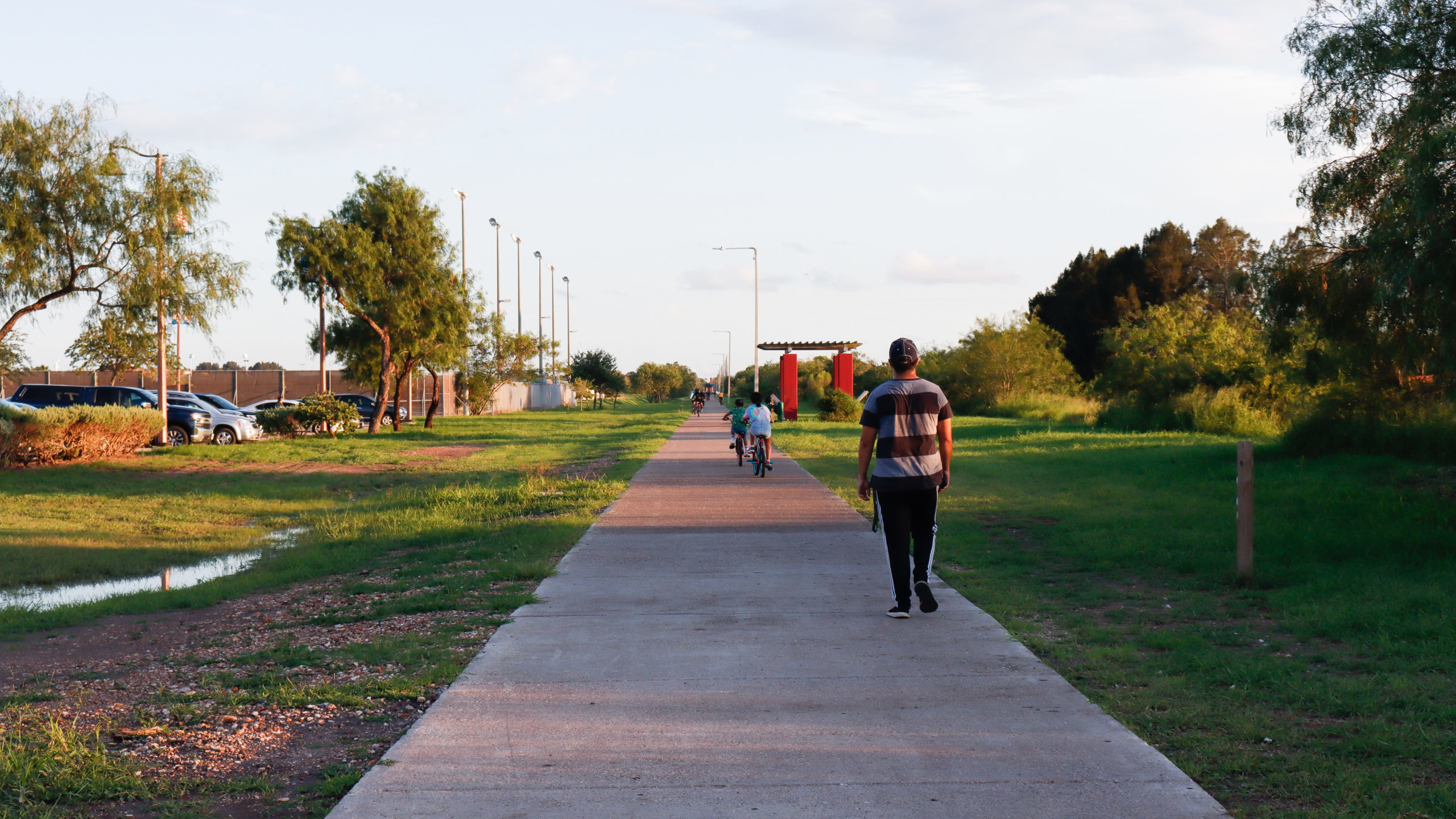Brownsville, Texas
Q&A: Brownsville, Texas
Lizzie MacWillie, Kelsey Menzel, Jesse Miller & Josué Ramirez

Brownsville, Texas residents walk and bike on the Paseo de la Resaca trail system. Credit: Veronica Gaona
An interview with report editors Lizzie MacWillie, Kelsey Menzel, Jesse Miller, and Josué Ramirez.
Read the report Brownsville Undercurrents on Brownsville, Texas.
When designers are asked to think about a community, the charge they are given is often focused on thinking about what new physical infrastructure or development is needed, or how specific buildings or spaces could be used. Based on your experience reporting on Brownsville, what do you think the usefulness or limitations are of using the lens of the built environment to think about overall community health and needs?
Capitalism has driven the development of the built environment; understanding people’s basic needs and helping them thrive has been less important. Capitalism is rooted in colonialism, white supremacy, and extraction; it puts aside or actively works against community health and community needs that are not immediately profitable.
The lens of the built environment is important for understanding the context and commonly accepted values or modus operandi of a place. This lens is not the end-all-be-all, however. Focusing on the built environment can provide comfortable ways for people to believe they are addressing systemic inequality. In other words, it is easy for a designer to jump to a built-world-focused project that has only moderate, mostly self-serving, impact.
Instead, the model of community organizing is more appropriate to supporting grassroots efforts and needs, identifying ways the built environment should be changed and determining how to go about changing it.
What is the role of design—or of designers—in identifying and addressing the challenges of a community? What are its limits and opportunities? What is scalable? What needs collaboration?
Everything needs collaboration. Communities already know the challenges and opportunities they are facing. There are skills we bring as designers in helping to express those challenges and opportunities. But it shouldn’t be up to designers to define what the solutions are. Designers should focus on supporting communities to do the work they’re already doing or help build capacity for the work they want to do.
If you could set the agenda, what needs to happen next to make Brownsville flourish in the years to come?
All efforts to solve Brownsville’s challenges and build on its assets should center local knowledge and give community control in decision making—and the city’s budget should prioritize this grassroots work. Some steps to break the past and continued Anglo dominance and create a city identity that more accurately reflects and responds to its residents would include conducting City business in English and Spanish equally; memorializing, honoring, and telling the story of people of color in public spaces; and enacting economic policy that eliminates barriers for micro-entrepreneurs. And finally, the banks of the Rio Grande need to be demilitarized and opened to the people to create more open, accessible public space for Brownsville.
As an editor, what did you learn about doing this type of work? How can you give voice to a community? What might design professionals learn from this project about working in communities not their own?
It’s not up to designers to “give voice to a community”: communities have voices, but the power structures that exist are such that they are not always listened to. It’s important to recognize that there are, and have been, people doing the hard work in every community, and those are the folks that should be making the decisions about that community’s future. The transformation that’s needed so we can all be healthy and thrive extends beyond the scope of architecture, so we need to be engaging in these struggles—decolonization, dismantling white supremacy, and capitalism—as designers and as individuals.
The views expressed here are those of the authors only and do not reflect the position of The Architectural League of New York.
